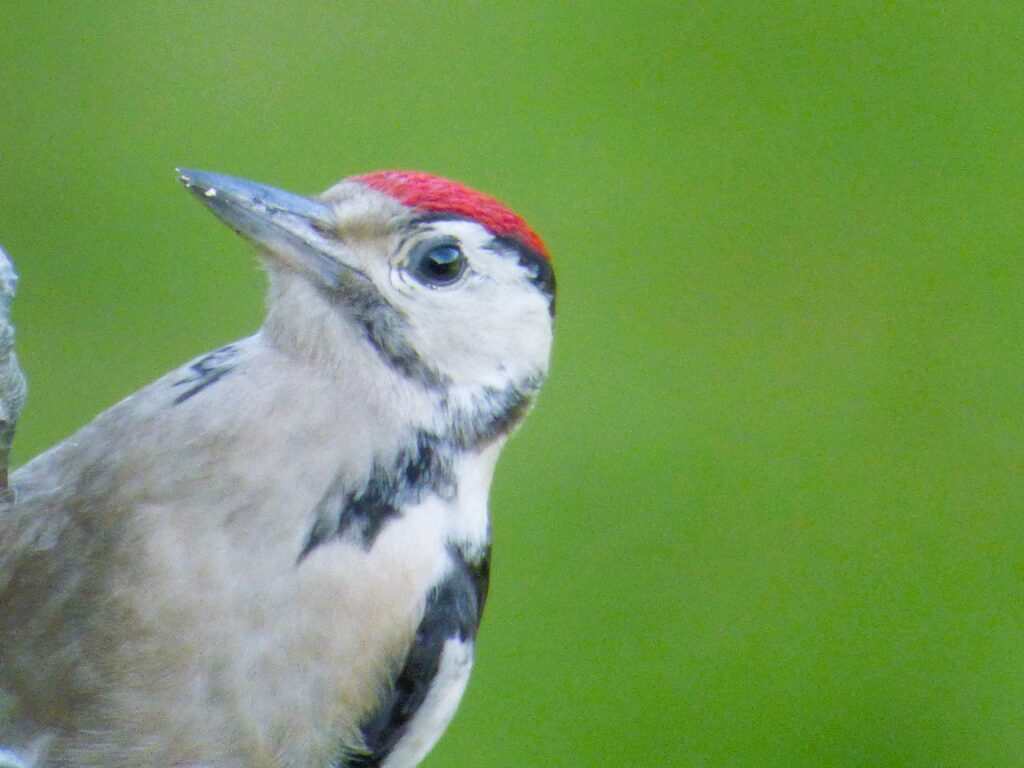Understanding Pecking Behaviour – Why Woodpeckers Peck
Why Woodpeckers Peck – Pecking is the behaviour everyone associates with woodpeckers, but have you ever stopped to think about why they do it? It’s not just for show. Every tap, knock, and full on drumming session serves a purpose, or often several at once. The Great Spotted Woodpecker is one of the UK’s most visible peckers, and if you’ve got them visiting your garden, chances are you’ll hear a lot more than you’ll see.
Pecking behaviour is how they feed, communicate, build nests, defend territory, and even flirt. It’s part toolkit, part language, and part performance. Once you start to pay attention to the way they peck, speed, rhythm, surface you’ll unlock a whole new level of understanding about what they’re trying to say. And they’re saying a lot.
Foraging Pecking – The Behaviour Behind the Beak
At its most basic level, pecking is how woodpeckers find food. Insects and larvae live inside the bark of trees, often deep within the wood. A woodpecker’s strong beak and shock absorbing skull allow it to hammer into the bark repeatedly without injury. But it’s not just random smashing. It’s calculated. They listen first. Their hearing is so finely tuned they can detect the movement of bugs beneath the surface.
Once they zero in, they’ll drill a hole and use their long, sticky tongue to fish the meal out. This is known as foraging pecking — functional and methodical. You might spot it on old trees, fence posts, and even the wooden sides of garden sheds. It’s quieter and more focused than the flashy drumming most people notice.
Drumming Communication
Then there’s drumming. The rhythmic burst of rapid pecking used for communication. Unlike foraging, this isn’t about food. It’s about being heard. Males drum to declare their territory and attract mates, while females may drum to respond or maintain pair bonds. This is most common in early spring, but you’ll sometimes hear it in autumn too.
Drumming is short, sharp, and fast often repeated several times from the same perch. The surface matters. A hollow tree or metal post can amplify the sound and make it travel farther. It’s not uncommon for birds to favour certain drumming posts and return to them year after year. If you hear that classic rolling drumbeat in your garden, it’s not random. It’s a message.
Nest Excavation
Nest excavation is another type of pecking, and it’s a real labour of love. Great Spotted Woodpeckers carve their own nest cavities each year, usually in dead or decaying trees where the wood is soft enough to work but strong enough to protect chicks. This takes time sometimes several days of constant chiselling.
Both parents may work on the hole, but the male typically does most of the heavy lifting. If you hear steady, even tapping in early spring coming from the same spot for hours at a time, it’s likely a nest in progress. The entrance is always neat and round, and the inside is shaped to cradle the eggs safely. It’s one of the most skilled and purposeful forms of pecking they do.
Exploratory and Social Pecking of Why Woodpeckers Peck
And finally, there’s the odd stuff the exploratory taps, the frustrated bursts on a metal pole, the bored sounding thanks on a fence. These often come from juveniles still learning what to do with their beaks. They may peck for the fun of it, or to practise. You’ll also see adults test new feeders this way.
A few light taps to assess the surface, hear the echo, and get a feel for what’s worth pursuing. The longer you observe, the more you’ll notice these little quirks. Pecking isn’t just instinct. It’s nuanced, varied, and deeply tied to communication. So next time you hear a woodpecker knocking in the garden, take a second to really listen. You might just start to understand what they’re trying to say.
